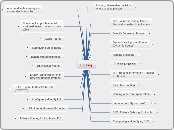a CCNA CCNA 18 éve
3648
Routings

a CCNA CCNA 18 éve
3648

Még több ilyen
See "Packets routed across Internet in several steps"
Each of network entries in the routing table has an accumulated distance vector to show how far away that network is in a given direction
Interface leading to each directly connected network has a distance of 0